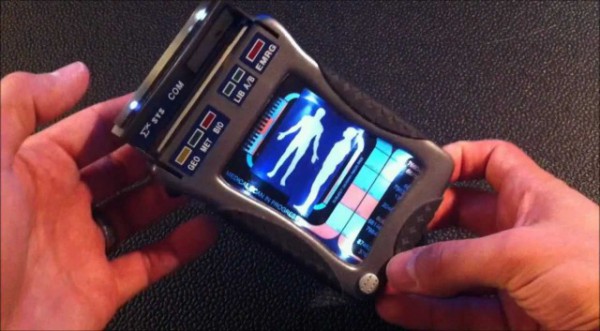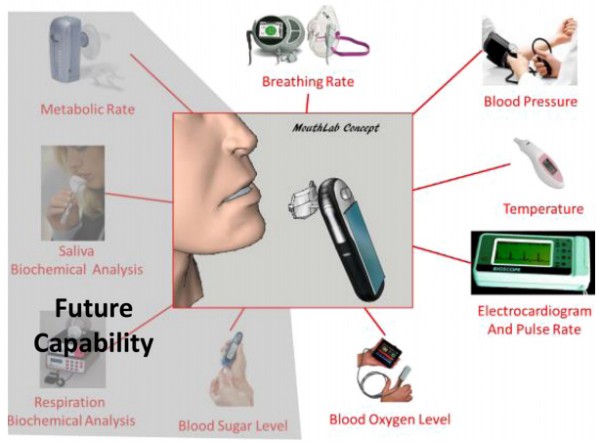MouthLab’s ‘tricorder’-style device could analyze your vital signs in real time

With public medical systems across the developed world floundering thanks to insufficient funding and a graying population base, it’s becoming increasingly clear the old model of government-supported healthcare is headed for crisis. While this has caused alarm not dissimilar from that of “peak oil,” we have seen a subsequent upswell in the number of technologies promising to revolutionize the way we practice medicine and making it sustainable for the future. In line with this trend, researchers at John Hopkins School of Medicine released a paper in the September issue of the Annals of Biomedical Engineering revealing that they are in the final stages of perfecting a handheld device called MouthLab that would enable hospital-level vital sign analysis to be done from home without the supervision of medical specialists.
The MouthLab device has been referred to as a “check engine light” for the human body, with the potential to greatly cut down on the number of unnecessary ambulance trips and emergency room visits when a patient’s vital signs are good. While the current version of the gadget is capable of assessing four vital sign indicators, as well as blood oxygen levels, future versions are slated to include capabilities that would include saliva biochemical analysis, blood sugar levels, respiration biochemical analysis and metabolic rate. This is where the device begins to sound suspiciously like the tricorder of Star Trek.
With the Qualcomm Tricorder XPRIZE also coming to term this year, the question no longer seems to be whether a tricorder is indeed possible, but rather when it will reach the market. If there is a silver bullet that could save so many bedraggled health care systems across the globe, one of these devices is likely to be it. And of all the tricorder like gadgets boasting such potential (Scanadu Scout etc.), the Johns Hopkins MouthLab is probably the most ambitious.
Thanks to its mouthpiece design, the MouthLab has the advantage of enabling saliva and respiration biochemical analysis. The idea behind these is that many diseases leave biochemical markers that are detectable in one’s saliva and breath. Two of the most common diseases that show evidence of being detectable through the breath are diabetes and lung cancer. Given the soaring rates of diabetes throughout the developed world and more recently in places like India and China, a device that enables the early detection of diabetes could cut down on medical costs significantly and potentially save millions of lives as well.
The Mouthlab includes several ingenious design features not found in other similar devices. Principal among these is the system it employs for measuring blood pressure and ECG. While many wearables these days offer heart rate monitoring, this functionality cannot detect the kind of heart rhythms that would indicate something like an impending heart attack. For that, one requires an ECG reading. The MouthLab uses contact points on the upper and lower lip as well as a thumb pad to generate an ECG reading comparable to that found in most ambulances and health clinics. The MouthLab unit itself resembles the mouthpiece and regulator found in scuba diving equipment, with an attached box that will display the vital signs measurements. In the proposed consumer version, this data will also be uploaded to an account in the cloud for long-term storage and analysis.












